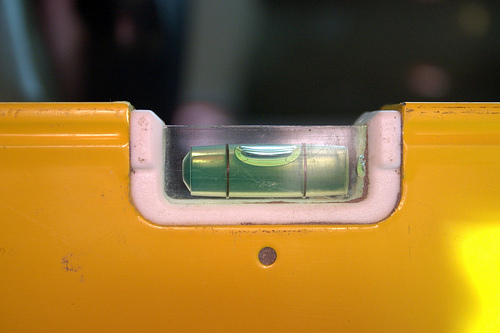Did you go for the laser level? Well, spirit levels will be with you in spirit.
- Spirit levels are an invention typically used to determine if either a vertical or horizontal platform is exactly aligned.
- ‘Spirit levels’ are also known as ‘bubble levels’, ‘levels’ and ‘spirits’, and they are commonly used in the construction industry.
- Spirit levels are typically made of a tube and a holder, and the tube is generally made of glass or plastic, while the holder is commonly made of plastic, wood, aluminium or other metal.
- Typically, the tube containing the liquid in a spirit level is cylindrical, rectangular or crescent-shaped, and is marked with a central point and/or into sections, and the tube is deliberately filled with a small air space which creates a bubble.
- When the bubble inside a spirit level sits centrally, rather than off-centre, the platform or object sitting parallel to the spirit will be level, or if it is sitting perpendicular to the spirit, it will be aligned vertically.
Spirit Level
Image courtesy of David Jones/Flickr
- The coloured liquid used in spirit levels is generally alcoholic, hence the level’s name, which is commonly ethanol dyed green or yellow; and alcohol is used instead of water as the latter freezes more easily and provides more friction, preventing smooth bubble movement.
- To establish the accuracy of a spirit level, the bubble should have an increment from the centre, equal to when the level is rotated 180° on the same surface.
- The spirit level is said to have been invented in the mid 1600s by the wealthy Frenchman Melchisedech Thevenot, who had studied science duruing his life; however they did not become popular until the 1700s.
- Spirit levels are said to have replaced water bottles that were used for similar purposes, and these levels are being slowly replaced by laser-based levels that are generally more accurate and can measure in three dimensions.
- The accuracy of a spirit level depends on the liquid container’s shape, the bubble size and liquid type, as these all contribute to a level’s sensitivity.






Very informative post. Thank you very much for sharing.